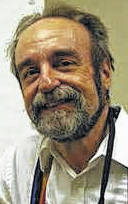
By Tom Burns
Stargazing
Who has not suffered through a violent storm only to have the sun break through the clouds and produce a glorious rainbow?
Rainbows appear only under specific conditions and don’t last very long. Their ephemerality makes them feel like a special gift, something that you must be in the right place at the right time to see. The experience can be almost spiritual — as if you are witnessing a phenomenon not entirely of this world.
From a Judeo-Christian perspective, rainbows symbolize God’s love and faithfulness. In Genesis, God sends a flood to cleanse the Earth of sin and wickedness. After the flood recedes, God promises Noah never again to destroy life on Earth by a flood. A rainbow seals that covenant.
“I have set my rainbow in the clouds, and it will be the sign of the covenant between me and the Earth… . Whenever the rainbow appears in the clouds, I will see it and remember the everlasting covenant between God and all living creatures of every kind on the Earth” (Genesis 9:13-16, NIV).
The rainbow is a stunning example of what astronomers call the spectrum of visible light, the range of radiation visible to the human eye. That range includes colors from red to violet.
A rainbow is created when sunlight passes through water droplets suspended in the air. As light enters a droplet, it slows down and bends. Astronomers call the “bending” process refraction.
The colors mixed into the light bend slightly differently and separate to form an arc of hues. Those colors result from the different wavelengths of light, with red light having the longest wavelength and violet light having the shortest.
However, the spectrum of light also includes radiation invisible to the human eye. Astronomers call that vast array of wavelengths the electromagnetic spectrum, which extends from the longest radio waves to the shortest gamma rays.
Hidden in the electromagnetic spectrum are answers to universal mysteries that have puzzled humans for as long as we have been human.
Because of the information coded into a star’s spectrum, we know what it is made of. We know what makes it shine.
We are beginning to understand how the elements that make up our bodies came into existence. We know the energy that erupted from one of those stars became the catalyst for life on our planet.
When astronomers analyzed the entire range of the electromagnetic spectrum, they learned that the universe is very old.
It began 13.8 billion years ago in an incomprehensibly gigantic explosion astronomers call the Big Bang. In those billions of years, the universe has expanded from very hot, dense, and small to cool, spread out, and enormous.
I am not here to question the truth of the set of books we collectively call the Bible. I will not quarrel about the existence of a Creator. I simply suggest that the Creator created a second glorious work that we might call the Book of Nature.
Biblical scholars are still unraveling the mysteries embedded in the Bible. Humans struggled for millennia before they developed the intelligence and tools to begin unraveling the mysteries of the Book of Nature. One of those tools is spectroscopy, the science of the rainbow-colored spectrum of light.
If God created the Book of Nature, God also created the laws by which nature functions. The Book of Psalms provides a hint that understanding those laws is an essential step in renewing and strengthening our relationship with the Creator:
“The heavens declare the glory of God; the skies proclaim the work of his hands. Day after day they pour forth speech; night after night they reveal knowledge” (Psalm 19:1-2, NIV).
The meaning, at least to me, is unmistakable. To investigate the laws of nature is to get a glimpse into the mind of God.
For those Christians who deride the efforts of scientists to decode nature’s grand and glorious book, I have two simple questions: Why, then, do our hearts soar when a rainbow appears after a dark storm? Why, then, did God mark his covenant with all of us on Earth with the rainbow’s glory?
Tom Burns is the former director of the Perkins Observatory in Delaware.

